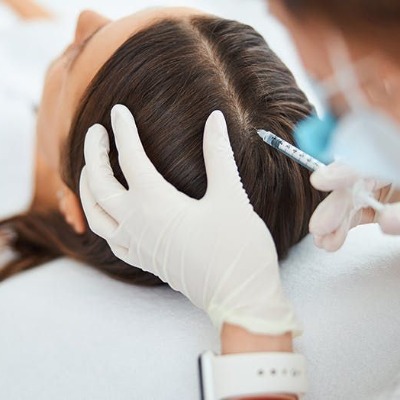
Platelet-rich plasma (PRP) serves as a well-known treatment for hair loss through blood components harvested from individual patients to achieve hair enhancement. PRP functions as a natural method among the most minimally invasive procedures. PRP therapy can result in adverse consequences. So, here in this blog, we will discuss PRP hair treatment in Islamabad and its advantages together with the safety concerns.
What is PRP Hair Treatment?
The process of PRP hair treatment starts by collecting small blood samples from patients followed by centrifugal platelet-rich plasma separation and subsequent head injection. The growth factors present in platelets promote better health and new growth of hair follicles.
Common Side Effects of PRP Hair Treatment
Although PRP is normally safe, some people may develop minor negative effects. These effects are usually temporary and decrease within a few days. Here are some of the most common adverse effects:
Pain and Discomfort
As PRP includes repeated doses into the scalp, minor pain, and soreness are usual. The injection sites may feel uncomfortable or sensitive for a day or two following the operation.
Swelling
Some patients report edema around the treatment area. This generally happens owing to the body’s natural reaction to the injections. The edema normally goes down within 48 hours.
Redness and Bruising
Redness and minor bruising can show at the needle sites. This is a common reaction and normally reduces within a few days. Therefore, people with sensitive skin may see more apparent redness.
Itching
As the skin heals, some individuals may feel minor burning. This is part of the healing process and should not be a cause for worry until it becomes serious.
Temporary Hair Shedding
Some people may notice increased hair loss shortly after the therapy. This is a temporary response and happens as weak hairs fall out to make place for new, healthier growth.
What Are The Rare Side Effects of PRP Hair Treatment?
While PRP therapy is considered safe, some uncommon side effects can occur, especially if the operation is not conducted properly.
Infection
PRP requires shots, there is a tiny risk of sickness at the treatment locations. This is unusual when the process is handled under sterile settings by a trained practitioner.
Allergic Reaction
Although PRP is obtained from the patient’s blood, in very rare situations, some persons may develop a response to the components utilized during processing. This can lead to an allergic reaction.
Nerve or Tissue Damage
If PRP treatments are not provided appropriately, they may cause slight nerve or muscle damage. This is why obtaining an experienced specialist is crucial.
Scalp Tenderness or Headaches
Some people report headaches or a feeling of tightness in the hair following PRP treatment. This normally fades within a few hours or days.
How to Minimize Side Effects
To decrease the likelihood of negative effects, follow these guidelines:
Choose a Qualified Professional: Make sure your PRP treatment is handled by a skilled and licensed practitioner.
Follow Aftercare Instructions: Avoid touching or stroking the head quickly after treatment.
Stay Hydrated: Drink enough water as it will help your body heal faster.
Avoid Alcohol and Smoking: These can slow down the healing process and impair the efficiency of the treatment.
Use Gentle Hair Care Products: Avoid strong chemicals on your hair for a few days after the process.
Who Should Avoid PRP Hair Treatment?
While PRP is safe for most people, certain people should avoid or contact a doctor before having treatment:
- People with blood disorders or clotting concerns
- Patients with active diseases or skin issues on the head
- Individuals with significant hair loss that may not respond to PRP
- Those taking therapy or other drugs that influence blood health
Final Thoughts
PRP hair treatment is a beneficial option for hair loss, but it is not fully free of side effects. Most side effects are modest and temporary, although uncommon complications can occur. If you are considering PRP therapy, visit RHT-PK and consult with our hair transplant surgeon Dr Naveed Azhar to confirm it is the appropriate choice for you. By taking measures and practicing proper aftercare, you can decrease risks and enjoy the rewards of healthier, fuller hair.



Leave Your Comment